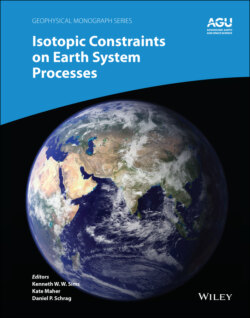Читать книгу Isotopic Constraints on Earth System Processes - Группа авторов - Страница 75
3.4.4. Mantle Source(s) of Calcium in Carbonatite Magmas
ОглавлениеThe similar δ44Ca of the studied Oldoinyo Lengai carbonatite lavas and terrestrial basalts (i.e., BSE composition) suggests a mantle source for their calcium. This interpretation is consistent with the general consensus that carbonatites originate from low‐degrees of partial melting of the mantle (see Bell & Tiltonm, 2002; Walter et al., 2008). It is also consistent with studies that conclude carbonatite volcanoes extrude primordial volatiles (CO2, He, N2, and Ar) that are indistinguishable from those emitted along mid‐ocean ridges despite the fact that Oldoinyo Lengai carbonatites occur in a setting far removed from oceanic spreading centers (Fisher et al., 2009). It is possible that Oldoinyo Lengai lavas, which are natrocarbonatite, are not representative of more Ca‐rich carbonatite magmas. Extruded carbonatites, being composed largely of soluble carbonates, are easily weathered and therefore unlikely to be preserved in the geological record. The question of why this volcano extrudes lavas that are chemically different to older carbonatite centers, and whether ancient carbonatites were all originally natrocarbonatites and subsequently altered to calciocarbonatites, remains unanswered (Dawson et al., 1987; Zaitsev & Keller, 2006).
